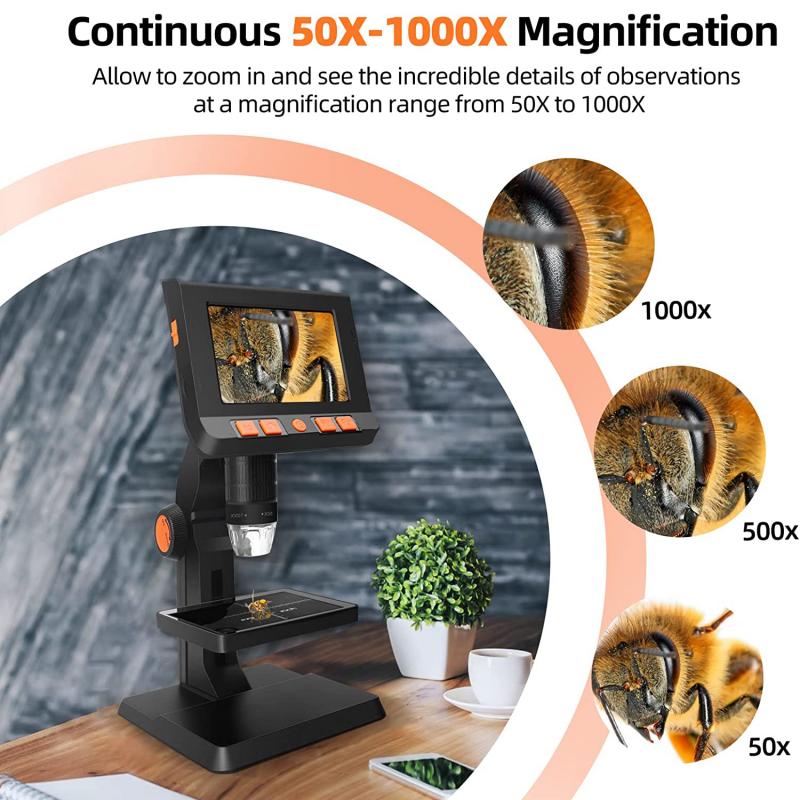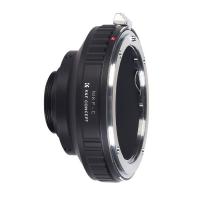What Is An Inverted Microscope ?
An inverted microscope is a type of microscope where the light source and condenser are located above the stage pointing downwards, while the objective lens and turret are located below the stage pointing upwards. This design allows for the observation of samples that are too thick or large to be viewed with a traditional upright microscope. Inverted microscopes are commonly used in cell biology, microbiology, and other fields where the observation of living cells and tissues is necessary. They are also used in materials science to observe the surface of materials and in metallurgy to examine the microstructure of metals. Inverted microscopes can be equipped with a variety of accessories, such as fluorescence filters, phase contrast optics, and digital cameras, to enhance their imaging capabilities.
1、 Optical design and principles of an inverted microscope
What is an inverted microscope?
An inverted microscope is a type of microscope that has its light source and condenser lens located above the specimen, while the objective lens and eyepiece are located below the specimen. This design allows for the observation of living cells and tissues in a culture dish or other container, as well as the ability to manipulate the specimen with tools such as micromanipulators.
The inverted microscope was first developed in the 1850s by J. Lawrence Smith, but it wasn't until the 1960s that it became widely used in biological research. Today, inverted microscopes are commonly used in cell biology, microbiology, and other fields where the observation of living specimens is necessary.
Optical design and principles of an inverted microscope
The optical design of an inverted microscope is similar to that of a traditional compound microscope, with the addition of a mirror or prism to reflect the light from the source down onto the specimen. The objective lens is located below the specimen, and the image is magnified and projected up through the eyepiece for observation.
One of the key advantages of the inverted microscope is its ability to observe living cells and tissues in their natural environment. This is particularly useful in cell culture studies, where cells can be grown in a dish and observed over time to study their behavior and interactions.
In recent years, advances in technology have led to the development of new imaging techniques that can be used with inverted microscopes. For example, fluorescence microscopy allows for the visualization of specific molecules or structures within cells using fluorescent dyes or proteins. Confocal microscopy uses a laser to scan the specimen in a series of thin sections, producing a 3D image that can be rotated and viewed from different angles.
Overall, the inverted microscope remains an essential tool in biological research, providing a window into the complex world of living cells and tissues.

2、 Applications in cell biology and live cell imaging
An inverted microscope is a type of microscope that has its light source and condenser lens located above the stage, while the objective lens and turret are located below the stage. This design allows for the observation of samples that are too thick or large to be viewed with a traditional upright microscope. Inverted microscopes are commonly used in cell biology and live cell imaging.
In cell biology, inverted microscopes are used to observe living cells in culture. The microscope's design allows for the observation of cells in a more natural environment, as they can be viewed in a petri dish or other culture vessel. This is particularly useful for studying cell behavior and interactions, as well as for monitoring cell growth and division.
Live cell imaging is another important application of inverted microscopes. By using specialized imaging techniques, researchers can observe the behavior of living cells in real-time. This allows for the study of dynamic processes such as cell migration, protein trafficking, and cell signaling.
In recent years, advances in technology have led to the development of new imaging techniques that have expanded the capabilities of inverted microscopes. For example, super-resolution microscopy techniques such as structured illumination microscopy (SIM) and stimulated emission depletion (STED) microscopy have allowed for the observation of structures and processes at the nanoscale level.
Overall, inverted microscopes are an essential tool for cell biology and live cell imaging research, and their continued development and refinement will undoubtedly lead to new insights into the workings of living cells.

3、 Contrast methods: phase contrast, DIC, fluorescence
An inverted microscope is a type of microscope that has its light source and condenser lens located above the stage, while the objective lens and turret are located below the stage. This design allows for the examination of living cells and tissues in culture dishes or other containers, as the objective lens can be positioned closer to the sample. Inverted microscopes are commonly used in cell biology, microbiology, and other fields where the observation of living specimens is necessary.
Contrast methods are techniques used to enhance the visibility of specimens under a microscope. Phase contrast is a contrast method that uses differences in refractive index to create contrast between different parts of a specimen. This technique is particularly useful for observing living cells and tissues, as it allows for the visualization of structures that would otherwise be difficult to see. Differential interference contrast (DIC) is another contrast method that uses differences in refractive index to create contrast, but it produces a more three-dimensional image than phase contrast. Fluorescence is a contrast method that uses fluorescent dyes to label specific structures or molecules within a specimen. This technique is commonly used in cell biology and molecular biology to visualize specific proteins or other molecules within cells.
The latest point of view on contrast methods is that they continue to be essential tools for microscopy, particularly in the study of living cells and tissues. Advances in technology have led to the development of new contrast methods, such as super-resolution microscopy, which allows for the visualization of structures at the nanoscale level. Additionally, the use of genetically encoded fluorescent proteins has revolutionized the field of fluorescence microscopy, allowing for the visualization of specific proteins and other molecules in living cells. Overall, contrast methods are critical for the study of biological systems and will continue to be important tools for microscopy in the future.

4、 Components: objectives, condensers, filters, cameras
An inverted microscope is a type of microscope that has its light source and condenser lens located above the stage, while the objectives and the specimen are located below the stage. This design allows for the examination of living cells and organisms in a culture dish or other container, as well as the observation of thicker specimens that cannot be viewed with a traditional microscope.
The components of an inverted microscope include objectives, condensers, filters, and cameras. The objectives are the lenses that are closest to the specimen and are responsible for magnifying the image. The condensers are lenses that focus the light onto the specimen, and filters are used to adjust the color and contrast of the image. Cameras can be attached to the microscope to capture images and videos of the specimen.
In recent years, inverted microscopes have become increasingly popular in the field of cell biology and biotechnology. They are used to study the behavior of living cells, including cell division, migration, and differentiation. Inverted microscopes are also used in drug discovery and development, as well as in the production of biologics such as vaccines and monoclonal antibodies.
In conclusion, an inverted microscope is a powerful tool for studying living cells and organisms. Its unique design allows for the examination of thicker specimens and the observation of dynamic cellular processes. With the addition of modern imaging technologies, inverted microscopes have become an essential tool in the field of cell biology and biotechnology.






































